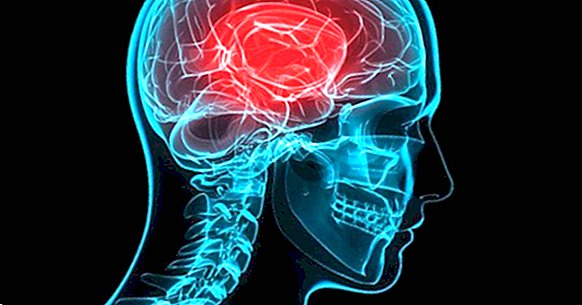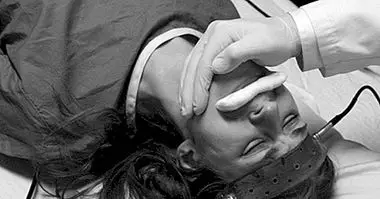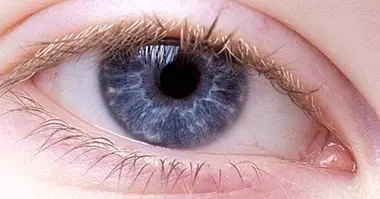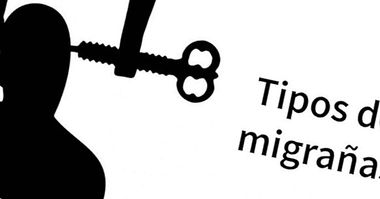Confabulations: definition, causes and frequent symptoms
The phenomenon of human memory is one of the most studied cognitive functions throughout the history of science, since in addition to being highly complex it is also treacherous to a great degree.
One of the deforming phenomena of the reality of people are the confabulations , understood as false products of memory.
- Recommended article: "Types of memory: how do we store memories?"
What are confabulations?
The confabulations are a curious phenomenon and difficult to explain. In the first place, could be defined with a kind of false memory due to a problem of recovery in memory .
But there are differences between false memories and confabulations, and that the latter go beyond the category of normal; either by the high frequency with which they appear or by the strangeness of these.
On the other hand, the person who suffers them is not aware of it, coming to take these memories as genuine and not doubting their veracity. The content of the confabulations varies greatly from one person to another, and may contain stories related to the experiences of the patient or other people, or become genuine constructions completely invented by the patient.
In addition, the degree of credibility can also be different from one person to another. Being able to contain from the most common stories (tell that he has gone to buy the bread), and therefore credible; even the most absurd and disproportionate stories (tell that one has been abducted by aliens).
Classification of the confabulations: Kopelman vs. Schnider
Throughout history the confabulations have been classified according to four criteria:
- Content : differentiated in true or false limits, probability of occurrence, positive or negative, etc.
- Mode in which they appear : provoked or spontaneous.
- T errenes in which manifests : autobiographical, episodic, semantic general or semantic personal.
- Clinical syndrome in which it appears.
However, the most accepted classification by the scientific society is that made by Kopelman. Which considered that the most relevant to take into account was the way in which they arose; distinguishing itself in two types. They are the following.
1. Spontaneous confabulations
They are the least frequent and tend to be related to another integrated amnestic syndrome along with another dysfunction.
2. Confabulations provoked
These phenomena are much more frequent in amnestic patients and are observed during the administration of some memory test. They are similar to the mistakes that a healthy person can make when trying to memorize something with a prolonged retention interval, and can represent a habitual response according to an altered memory.
Another classification was the one proposed by Schnider, who ordered them in four genres according to the different production mechanisms. Although these groups do not enjoy unanimous validity on the part of the scientific community, they can help the reader understand what they are about.
3. Simple triggered intrusions
This term includes the distortions that appear when the person is pressured to remember the details of a story. An example would be when the person tries to remember a list of words and introduces, unconsciously, new words that are not in it.
According to Schnider, this type of intrusion does not correspond to a specific recovery mechanism.
4. Momentary confabulations
They refer to the false statements a patient makes when prompted to make a comment in a conversation. Compared to other fantasies of more fantastic content, these can be completely plausible and credible by the listener, although they may be incompatible with the current state of the person and their circumstances.
For example, the patient may report that he is going to travel abroad when, in fact, he is admitted to the hospital.
Momentary confabulations are the most common of all, but they are not yet understood in their entirety so it is not clear if they have a mechanism of their own.
5. Fantastic confabulations
As the name suggests, these confabulations have no basis in reality; and they are frequent in patients with paralytic dementias and psychosis.
These confabulations are absolutely inconceivable from the logical point of view and they lack all sense. Also, if they are not accompanied by the behavior that corresponds to them.
Causes
Usually, the story of confabulations is typical of patients with damage to prefrontal areas of the brain , specifically the anterior basal brain; including here the orbitofrontal and ventromedial areas.
The disorders and diseases that have the most confabulations are the following:
- Wernike-Korsakoff syndrome
- Brain tumors
- Encephalitis due to herpes simplex
- Fronto-temporal dementias
- Multiple sclerosis
- Infarcts of the anterior communicating cerebral artery
On the other hand, from the neuropsychological point of view, three hypotheses are distinguished, which differ in the degree to which the deterioration of the memory affects the confabulations. These are the hypothesis centered on memory dysfunction, centered on executive dysfunction, or the dual hypothesis.
1. Memory dysfunction
This first assumption is based on the idea that Amnesia is a necessary condition for the patient to confabulate . At the time, the confabulations were considered a different form of amnesia. Belief that is still maintained today because they appear predominantly in neurological disorders that lead to deterioration of memory.
From this hypothesis, insists that confabulations are a way to "fill in" the gaps left by amnesia.
2. Executive dysfunction
Executive function includes self-directed cognitive skills internally and with a specific goal . These functions direct our behavior and our cognitive and emotional activity.
Therefore, this hypothesis establishes that the confabulations are the result of problems in this executive function. The evidence on which this theory is based is that these confabulations decrease when executive functioning improves.
3. Dual hypothesis
The third and last hypothesis maintains that the production of confabulations is due to a joint involvement of deficit procedures both at the level of memory and executive functioning.
Explanatory models of confabulations
The difficulty of defining the confabulations in a concrete way, explaining them as false memories but that are completely true for the patient; it makes necessary the elaboration of explanatory models on the part of the investigators.
During the beginning of the investigations into the conspiracies, the models insisted that they arose from the patient's need to compensate for the memory gaps. However, despite taking into account the emotional aspects, this model has been overcome today.
On the other hand, From neuropsychology there are several suggestions for explaining this phenomenon . These are grouped between those that define confabulations as a problem of temporality, and those that give greater relevance to the recovery process.
1. Theories of temporality
This theory supports that a patient who colludes suffers from a distorted sense of chronology. In this sense the patients are able to remember what happened but not the proper chronological order.
The theory of temporality has its backing in the observation that most confabulations can find their origin in a true memory but poorly situated.
2. Theories of recovery
Human memory is considered a reconstructive process, and confabulations are a great example of this.
According to these theories, the confabulations are the product of a deficit in the process of memory recovery. The strongest evidence is that it affects both the farthest memories and the ones acquired once the deficit is installed.
Even so, the recovery of memories is not a unique process , so it would be necessary to determine which specific aspects are those that are deteriorated.



















